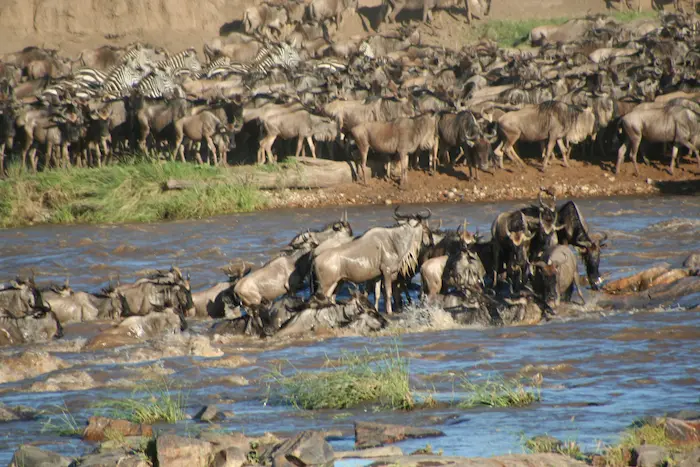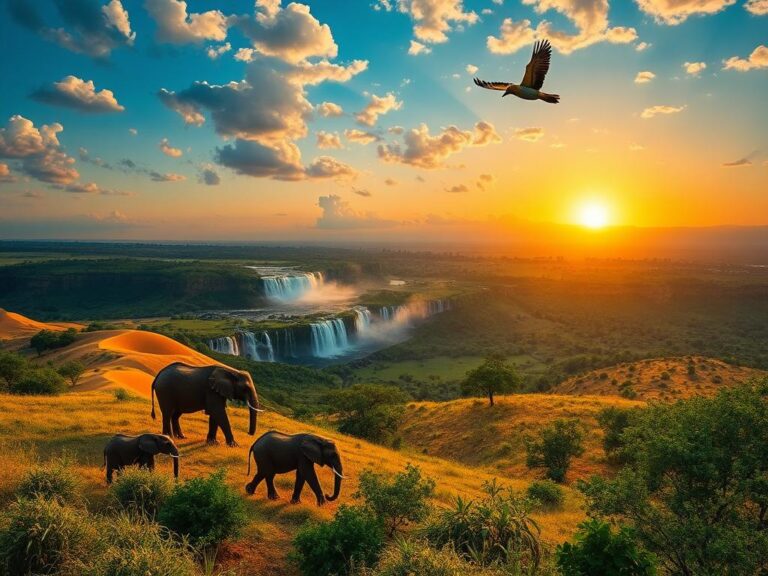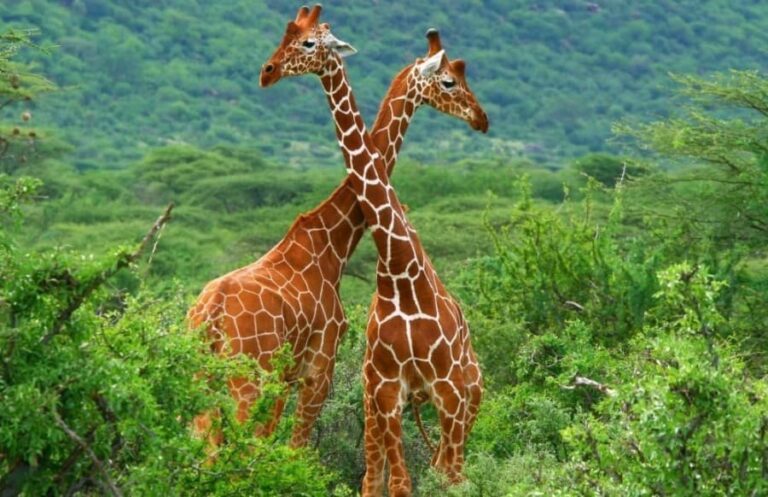
Serengeti, a breathtaking expanse of wildlife and natural beauty that captivates adventurers and nature enthusiasts alike. This article delves into the history, classification, uses, environmental issues, and significance of this iconic national park, while also addressing common queries and concerns.
As one of the most renowned wildlife reserves in the world, the Serengeti is not just a destination; it’s an experience that connects us to the raw beauty of nature. Whether you’re planning a safari or simply curious about this remarkable ecosystem, this guide will provide you with valuable insights.
The History of the Serengeti
The Serengeti National Park was established in 1951 and has since been recognized as a UNESCO World Heritage Site since 1981. The name “Serengeti” comes from the Maasai word meaning “endless plains,” which aptly describes its vast landscapes.
Over millions of years, volcanic activity shaped its terrain, resulting in expansive grasslands, rolling hills, and riverine forests. This unique geography supports an incredible diversity of wildlife and plant species.
Classification of the Serengeti Ecosystem
The Serengeti encompasses several distinct ecosystems:
1. Grasslands
These are characterized by open plains dominated by grasses, which provide essential grazing areas for herbivores like wildebeest and zebras.
2. Woodlands
Woodlands offer shelter for various species, including elephants and leopards. They play a crucial role in maintaining biodiversity.
3. Riverine Forests
These lush areas along riverbanks support diverse flora and fauna, serving as critical habitats for many bird species.
4. Mountains
The Serengeti also features mountainous regions that contribute to its ecological diversity.
Uses Cases of the Serengeti
The Serengeti serves multiple purposes:
- Ecotourism: Attracts millions of visitors annually for safaris and wildlife viewing.
- Research: Provides opportunities for scientific studies on wildlife behavior and conservation.
- Cultural Heritage: The Maasai people have coexisted with wildlife for centuries, contributing to local culture and traditions.
Significance of the Serengeti
The Serengeti is vital for several reasons:
- Biodiversity: Home to over 2 million ungulates and thousands of predators.
- The Great Migration: Hosts one of the most spectacular natural events on Earth, where wildebeests migrate in search of greener pastures.
- Conservation Efforts: Plays a crucial role in global conservation initiatives aimed at protecting endangered species.
Environmental Issues Facing the Serengeti
Despite its beauty, the Serengeti faces numerous environmental challenges:
- Poaching: Illegal hunting threatens various species, particularly elephants and rhinos.
- Climate Change: Altered weather patterns affect migration routes and food availability.
- Human Encroachment: Expanding agriculture and settlements disrupt natural habitats.
Diseases and Pests Affecting Wildlife
Wildlife in the Serengeti is susceptible to various diseases:
- Foot-and-Mouth Disease: Affects cattle but can spill over to wild populations.
- Tick-Borne Diseases: Impact both livestock and wildlife health.
- Invasive Species: Non-native plants can outcompete local flora, disrupting ecosystems.
Ornamental Value of the Serengeti
The aesthetic appeal of the Serengeti is undeniable. Its stunning landscapes provide inspiration for artists, photographers, and filmmakers.
Examples include:
- Photography Safaris: Capture breathtaking images of wildlife in their natural habitat.
- Artistic Inspiration: Many artists draw upon the vibrant colors and dramatic scenery for their work.
Conservation Efforts in the Serengeti
Conservation initiatives are crucial for preserving this unique ecosystem. Various organizations work tirelessly to protect wildlife and promote sustainable practices.
1. Anti-Poaching Measures
Efforts include training rangers, using aerial patrols, and implementing strict anti-poaching laws to safeguard endangered species.
2. Community Involvement
Local communities are engaged in conservation efforts through education programs that promote sustainable coexistence with wildlife.
3. Research Initiatives
Ongoing research helps monitor animal populations and assess ecosystem health, guiding conservation strategies effectively.
The Great Migration – Nature’s Grand Ballet
The most celebrated spectacle in the Serengeti is the Great Migration, a cyclical journey involving over a million wildebeest, zebras, and gazelles. This annual pilgrimage symbolizes resilience and interdependence inherent in nature.
Predators of the Plains – The Circle of Life
The Serengeti’s predators—including lions, leopards, cheetahs, and hyenas—play a vital role in maintaining ecological balance. Conservation efforts have been instrumental in ensuring these magnificent animals thrive within their habitat.
Birdlife – The Avian Life
The skies above the Serengeti are alive with over 500 species of birds. From flamingos at Lake Magadi to soaring eagles, bird conservation is crucial for maintaining ecological harmony within this diverse environment.
Flora – The Land’s Beauty
The flora of the Serengeti forms the foundation of its ecosystem. Iconic acacias, vast grasslands, and riverine forests provide sustenance and shelter to wildlife while sculpting the landscape’s beauty.
Coexistence – The Human Touch
Acknowledging communities living on the fringes of the park is essential. Conservation efforts increasingly focus on sustainable coexistence with local populations as stewards of this natural heritage.
The Future – A Legacy Entrusted
The Serengeti stands at a crossroads where decisions made today will shape its future. It symbolizes our planet’s enduring wild spirit—a jewel in the crown of wildlife conservation that beckons us all to cherish and protect it.
Frequently Asked Questions about the Serengeti
What is the best time to visit the Serengeti?
The dry season (June to October) is ideal for wildlife viewing as animals gather around water sources.
How do I get to the Serengeti?
You can access it by road or via light aircraft from major cities like Arusha or Nairobi.
What should I pack for a safari?
Essential items include binoculars, sunscreen, insect repellent, and comfortable clothing.
Are there accommodations within the park?
Yes, options range from luxury lodges to budget campsites.
Is it safe to travel in the Serengeti?
Yes, but it’s essential to follow safety guidelines provided by your tour operator.
Can I self-drive in the Serengeti?
Self-driving is allowed but recommended only for experienced drivers familiar with safari conditions.
What animals can I expect to see?
You can see lions, elephants, giraffes, zebras, and many more species.
Are guided tours necessary?
While not mandatory, guided tours enhance your experience with expert knowledge on wildlife behavior.
How much does a safari cost?
Costs vary widely based on accommodation type and duration; expect anywhere from $200 to $1,000 per person per day.
What conservation efforts are in place?
Numerous NGOs work alongside local communities to protect wildlife through education and sustainable practices.
Conclusion
The Serengeti National Park stands as a testament to nature’s grandeur. Its rich history, diverse ecosystems, and cultural significance make it a vital part of our planet’s heritage.
Whether you’re planning a visit or simply learning about this incredible destination, understanding its importance helps foster appreciation for conservation efforts worldwide.
If you found this article helpful or inspiring, feel free to share it with fellow nature enthusiasts!


